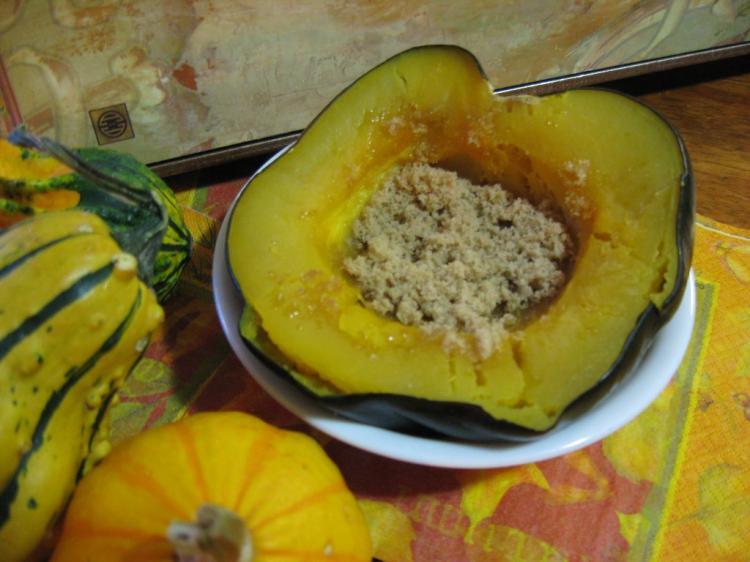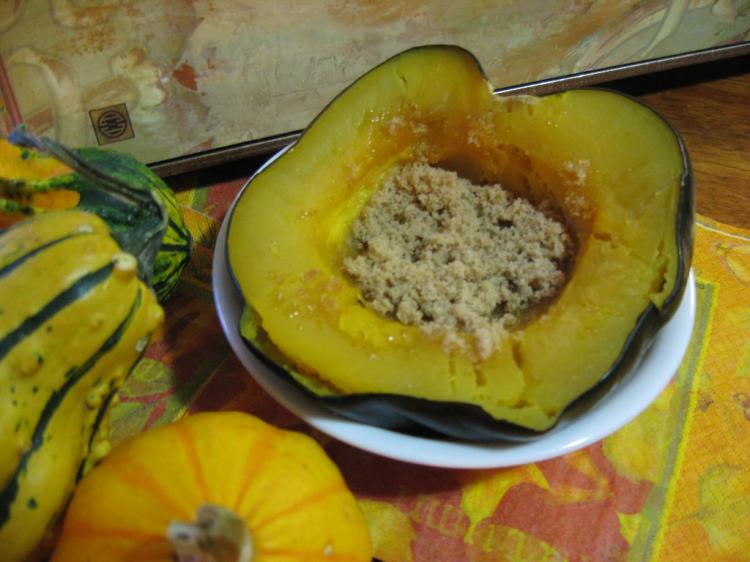The envoys of fall arrive to greet us well before the autumnal equinox. Gourds, which include pumpkins, winter squash, and those warty, odd-shaped decorative miniatures, begin showing up in supermarkets and roadside stands in late summer. Appearing even before the leaves start changing, they’re a distinctive harbinger of autumn. For the gourmet, they’re a key ingredient in a variety of seasonal dishes.
Squash is the fruit of plants from the gourd family. Originating in the Western Hemisphere, squash has been consumed for over 5,000 years. Summer squash, such as zucchini and pattypan, although usually available year round, peak in the summer months.
Summer squash is distinguished by thin, edible skins, soft seeds, and a high water content. Highly perishable, it will last less than a week in the fridge. Winter squash, like butternut, acorn, and spaghetti, have a firmer flesh with thick skin requiring longer cooking time. It should not be refrigerated and will keep in a cool dark place for up to a month.
Choose squash with a bright, firm skin that is free of bruises. Squash is a good source of vitamins A, B2, and C, as well as niacin, potassium, and iron.
Butternut Squash Soup
2 pound butternut squash, peeled and diced
2 tablespoons sugar
5 tablespoons butter
1 onion, chopped
1 quart water
1 cinnamon stick
2 ounces heavy cream
Salt and white pepper to taste
In a soup pot, sweat the squash, sugar, and some salt in the butter, covered, for three minutes. Remember sweating, as opposed to sautéing, means low heat. We do not want to brown the butter or the squash, just soften it. Add onion and sweat 10 minutes more. Add water and the cinnamon stick and simmer, covered, for 30 minutes.
Remove cinnamon and puree soup in a blender for at least one minute. Then pass through a fine mesh chinois or strainer. Finish with cream, salt, and white pepper to taste. A final option is to sprinkle some nutmeg on it just before service.
Some recipes instruct you to roast the squash first in the oven. I’ve tried it both ways and found that the roasted squash (which inevitably browns to some degree), produces a darker, unappealing colored soup. Sweating and simmering the squash renders a soup with a more vibrant hue.
Baked Acorn Squash
I have two recipes for baked acorn squash that I like. I never can decide which I like better, so I usually make one half of the squash one way and the second half the other.
Cut acorn squash in half through its poles (as in north and south), and scoop out the seeds. You can save the seeds and roast them if you like. Place the halves flesh side down in a covered baking dish, such as CorningWare, with enough chicken stock to come at least a quarter inch up the side of the squash. Bake in a preheated 350 degree F oven for 45 minutes. Remove the squash, drain the fluid, and turn the squash over, flesh side up.Cover the flesh with:
• Butter to taste. Use approximately 2–3 tablespoons per half, but you can adjust it accordingly.
• Brown sugar. Just sprinkle it on until the entire half is lightly coated.
• Powdered cinnamon. Use a light dusting over the entire surface.
• Salt and pepper to taste.
Here’s where the recipe can go one of two ways. After applying the above ingredients, add either allspice and ground cloves and/or nutmeg or 2–3 teaspoons of soy sauce per squash half. Allspice and cloves are strong spices so I would sprinkle them lightly.
Now put the squash back into the oven for 10–15 more minutes, flesh side up, without the lid. Try each recipe on each half of the squash and choose your own favorite.
Mark R. Vogel’s column “Food For Thought” is published in several newspapers and food related Web sites. Please contact Mark at [email protected].


